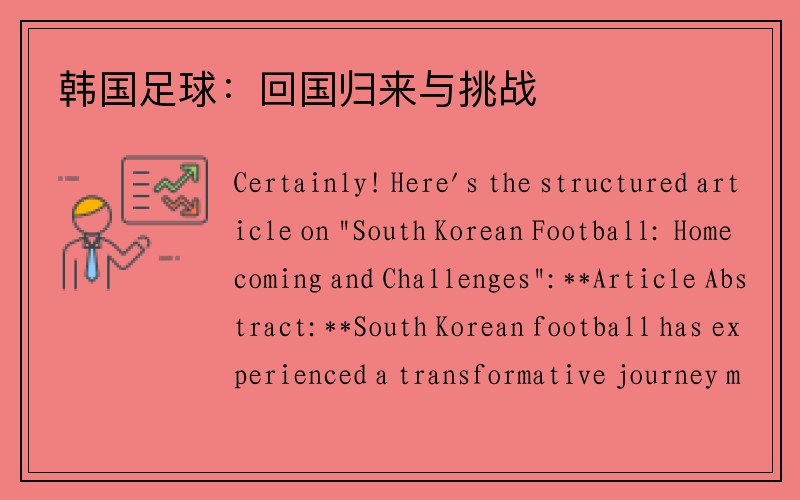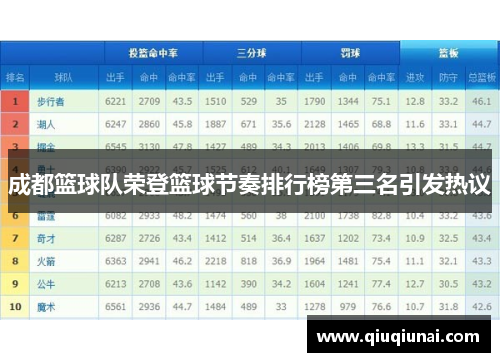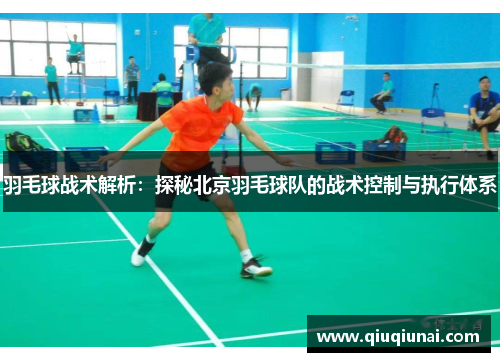韩国足球:回国归来与挑战
Certainly! Here's the structured article on "South Korean Football: Homecoming and Challenges":
**Article Abstract:**
ag尊龙凯时集团South Korean football has experienced a transformative journey marked by its return to prominence and the hurdles it faces. This article explores its resurgence on the global stage, the domestic challenges, youth development, and future prospects, offering insights into the dynamic landscape of South Korean football.
1、Resurgence on the Global Stage
South Korean football has seen a remarkable resurgence in recent years, marked by impressive performances in international tournaments. The national team's success in reaching multiple World Cup knockout stages has solidified its position as a competitive force in global football. This resurgence is not merely a coincidence but a result of meticulous planning, investment in infrastructure, and strategic development of players.
Underpinning this resurgence is a generation of talented players who have excelled in top European leagues, such as Son Heung-min and Hwang Hee-chan, bringing invaluable experience and skill back to the national team. Their success abroad has not only raised the profile of South Korean football but also inspired younger generations to pursue careers in the sport.
Moreover, the coaching staff's commitment to tactical innovation and adaptive strategies has enabled South Korea to compete effectively against traditionally stronger teams. This newfound resilience and tactical flexibility have been crucial in navigating the challenges of international competitions.
2、Domestic Challenges
Despite its international successes, South Korean football faces significant challenges on the domestic front. One of the primary concerns is the polarization between top-tier clubs and smaller, less financially stable teams. The concentration of talent and resources in a few elite clubs has widened the competitive gap, affecting the overall quality and parity of the league.
Moreover, issues such as match-fixing scandals and governance controversies have tarnished the reputation of domestic football, undermining public trust and investor confidence. Addressing these challenges requires comprehensive reforms in governance, financial transparency, and youth development initiatives.
Furthermore, the economic viability of smaller clubs remains precarious, threatening their long-term sustainability and contributing to a less competitive league environment. Balancing the interests of all stakeholders while fostering a more equitable and competitive domestic league is crucial for the continued growth of South Korean football.
3、Youth Development and Future Prospects
The future of South Korean football hinges on its ability to nurture young talent and provide them with pathways to professional success. Recognizing the importance of grassroots development, the Korean Football Association (KFA) has invested heavily in youth academies and development programs across the country.
Academies affiliated with professional clubs play a pivotal role in identifying and nurturing young talents from a tender age, emphasizing technical proficiency, tactical awareness, and mental resilience. These academies serve as breeding grounds for future national team players and ensure a steady supply of talent to sustain the competitiveness of South Korean football.
Furthermore, initiatives aimed at enhancing coaching standards and providing educational opportunities for young players are essential for their holistic development. By investing in youth development, South Korea aims to build a sustainable pipeline of talented players capable of competing at the highest levels of global football.

4、Conclusion: Charting the Course Ahead
In conclusion, South Korean football has made significant strides in reclaiming its status as a global contender while grappling with internal challenges and focusing on youth development. The resurgence of the national team on the international stage reflects years of strategic planning, investment, and dedication.
Looking ahead, addressing domestic challenges such as league parity, governance reforms, and financial sustainability will be critical to maintaining the momentum of growth. By prioritizing youth development and fostering a competitive domestic environment, South Korea can build upon its recent successes and pave the way for a promising future in global football.
总结:
South Korean football has navigated a path of resurgence internationally while facing internal challenges. Its success is bolstered by strategic planning and talent development. Moving forward, addressing domestic issues and nurturing youth talent will be crucial for sustained growth.
 星期日-星期五||8:00-7:00
星期日-星期五||8:00-7:00
 13594780077
13594780077 




